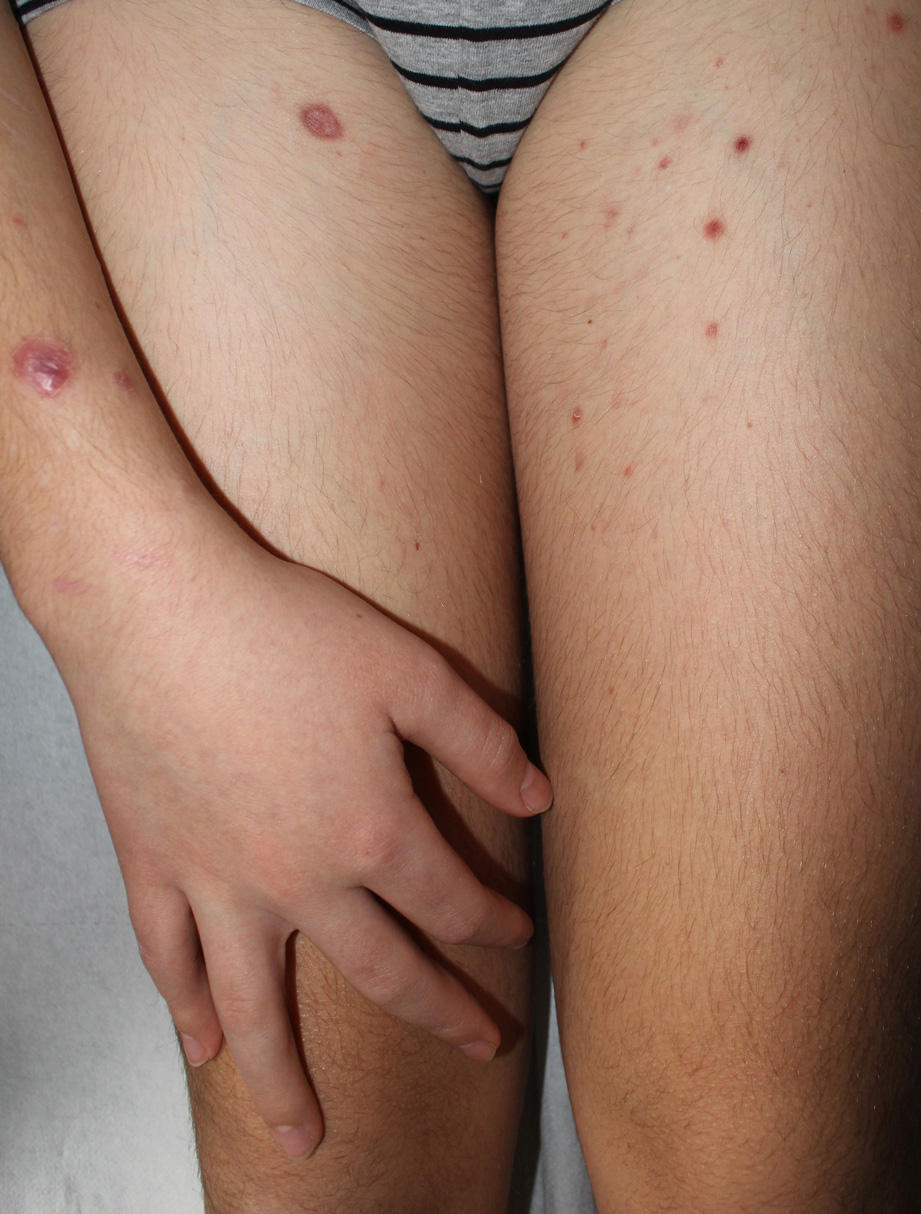Type B lymphomatoid papulosis in a 12-year-old child.

Downloads
DOI:
https://doi.org/10.26326/2281-9649.31.1.2220How to Cite
Abstract
In the WHO-EORTC classification (6) lymphomatoid papulosis (LP) is included among the primary cutaneous lymphomas; this term refers to non-Hodgkin’s lymphomas which at the time of diagnosis do not present extracutaneous manifestations; after the gastro-enteric system, the skin is the most frequent site of extranodal lymphomas (5).
Primary cutaneous lymphomas (PCL), despite being made up of a cell population comparable to that of lymph node lymphomas, have a clinical behavior significantly different from lymph node lymphomas localized secondarily in the skin, because they remain confined to the skin for a long time or always and often regress spontaneously; therefore PCLs require a different therapy. PCLs are distinguished in T-cell PCLs, which make up 80%, and B-cell PCLs. Among the T-cell PCLs, after mycosis fungoides, CD30+ lymphoproliferative disorders (6) are most common: the latter include LP and anaplastic large cell lymphoma, that represent parts of the same disease spectrum, are not histologically distinguishable and differ essentially because skin lesions do not heal spontaneously in lymphoma unlike those in lymphomatoid papulosis. The primary lesion of LP is a papule that can enlarge to become a nodule; this usually does not exceed 2 cm in diameter; papules and nodules can become exuding and ulcerate; they usually come in subintrant crops of 1-10 elements and spontaneously regress in 3-6 weeks (1). LP can last from a few months up to 40 years (5).
In contrast to the rather monomorphic and repetitive clinical features, histology shows highly variable patterns that recall different types of primitive cutaneous T lymphomas; in the same patient different histological types can be observed at the same time or at a later time (3).
The medium-term prognosis of LP is good with a 10-year survival close to 100% (5). The risk of developing another lymphoma in adults with lymphomatoid papulosis is 10-20% (2) and mycosis fungoides is the most frequently associated lymphoma. In children, the risk is lower: in a recent meta-analysis of 251 children with lymphomatoid papulosis (4), the incidence of lymphomas is 5.6%, but the most frequent lymphoma is anaplastic large cell primary cutaneous lymphoma.
In most cases, symptomatic therapy is sufficient; topical corticosteroids may be useful in lesions of exposed areas to limit the duration of cosmetic damage.
